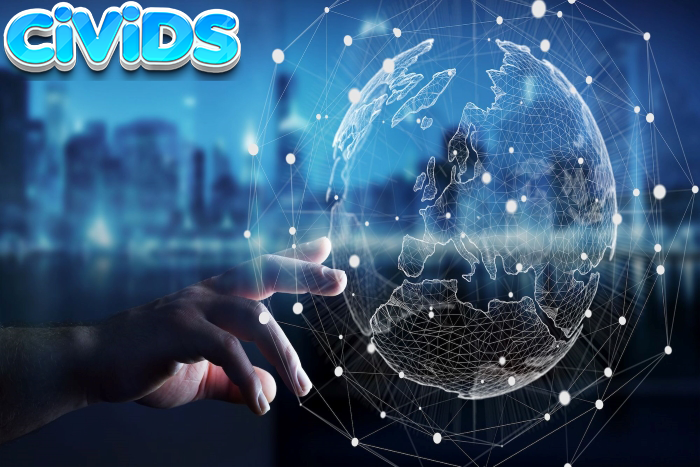History of Digital Development: Its Meaning and Benefits
In today’s world, digital technology influences nearly every aspect of life—from how we communicate and work to how we shop, learn, and relax. But how did we get here? What does digital development truly mean, and why is it so important?
This article explores the history of digital development, its meaning in the modern era, and the many benefits it brings to society, businesses, and individuals.

What Is Digital Development?
Digital development refers to the use of digital technologies to improve services, infrastructure, communication, and innovation in a variety of fields. It encompasses:
-
The growth of computing power
-
The spread of internet connectivity
-
The use of software and applications
-
The advancement of artificial intelligence (AI), cloud computing, and data analytics
Digital development isn’t just about creating new gadgets—it’s about integrating technology into daily life, business processes, and social systems to make them more efficient, accessible, and intelligent.
A Brief History of Digital Development
1. The Mechanical Age (Pre-1940s)
Long before modern computers, humans created tools like the abacus and mechanical calculators to assist with math. These early inventions laid the groundwork for computing.
In the early 1800s, Charles Babbage designed the first mechanical computer, known as the Analytical Engine, and Ada Lovelace wrote what is considered the first algorithm for a machine—earning her recognition as the world’s first computer programmer.
2. The Birth of Digital Computing (1940s–1950s)
The 1940s marked the beginning of true digital computing. During World War II, machines like the ENIAC and Colossus were developed to perform complex calculations and codebreaking.
These early computers were massive, expensive, and limited—but they introduced core concepts of binary computation, memory storage, and electronic data processing.
3. The Rise of Mainframes and Programming (1950s–1970s)
The 1950s to 1970s saw the development of mainframe computers used in government and large corporations. Programming languages like COBOL and FORTRAN allowed more people to work with computers.
The invention of the transistor and later the microprocessor greatly reduced the size and cost of computers, making them more accessible.
4. The Personal Computer Revolution (1980s)
In the 1980s, companies like Apple, IBM, and Microsoft brought computing into homes and small businesses.
-
The Apple II and IBM PC were affordable and powerful.
-
Microsoft Windows introduced graphical user interfaces.
-
Word processors, spreadsheets, and games made computers more practical and fun.
This era introduced digital technology to the masses.
5. The Internet Boom (1990s–2000s)
The 1990s saw a technological explosion with the birth of the World Wide Web. The internet connected computers worldwide, changing how people communicated and accessed information.
Key milestones included:
-
Web browsers like Netscape and Internet Explorer
-
Email becoming mainstream
-
The rise of e-commerce (eBay, Amazon)
-
The dot-com boom and bust
The digital world became more interactive, with websites, online services, and early social media platforms.
6. The Mobile and Cloud Era (2000s–2010s)
The 2000s introduced mobile computing and cloud services, accelerating digital development.
-
Smartphones like the iPhone (launched in 2007) put powerful computers in people’s pockets.
-
Social media platforms like Facebook, Twitter, and Instagram changed how people shared information.
-
Cloud computing allowed data and services to be stored and accessed remotely.
This created a more connected and flexible digital environment.
7. The Smart and AI Era (2010s–Present)
In the last decade, digital development has reached new heights with:
-
Artificial Intelligence (AI) and Machine Learning
-
Internet of Things (IoT)
-
Blockchain and cryptocurrency
-
5G connectivity
-
Automation and robotics
Digital systems are becoming smarter, faster, and more deeply embedded in all areas of life—from smart homes and digital health to autonomous vehicles and virtual assistants.
The Meaning of Digital Development Today
Digital development today is more than just using technology—it’s about transforming societies and improving lives. It plays a critical role in:
-
Economic growth: By creating new markets, jobs, and business models.
-
Social inclusion: By providing tools for education, communication, and access to services.
-
Innovation: By enabling faster experimentation and scaling of new ideas.
-
Sustainability: Through smart energy systems, precision agriculture, and digital tracking.
Governments, businesses, and non-profit organizations are investing in digital development to bridge the digital divide and ensure that everyone can benefit from the opportunities it offers.
Benefits of Digital Development
1. Enhanced Communication
Thanks to digital platforms, people can now communicate instantly across the globe through:
-
Messaging apps (WhatsApp, Telegram)
-
Video calls (Zoom, Skype)
-
Social media (X, Instagram, Facebook)
This has transformed personal relationships, education, and international business collaboration.
2. Better Access to Information and Education
The internet has made knowledge more accessible than ever before:
-
Online courses and universities offer flexible learning.
-
Platforms like YouTube, Coursera, and Khan Academy educate millions.
-
Digital libraries and research databases remove physical barriers to learning.
This empowers individuals to improve their skills and unlock new opportunities.
3. Economic Empowerment
Digital tools enable people to:
-
Start online businesses
-
Freelance or work remotely
-
Use mobile banking and digital payments
From small entrepreneurs in rural areas to large corporations, digital development fuels economic inclusion and financial growth.
4. Improved Healthcare
Digital technology is revolutionizing healthcare:
-
Telemedicine connects patients with doctors remotely.
-
Wearable devices monitor health in real time.
-
AI algorithms help diagnose diseases faster.
These advancements make healthcare more accessible, efficient, and personalized.
5. Efficient Public Services
Governments use digital development to offer e-governance services such as:
-
Online tax filing
-
Digital IDs
-
Public service portals
This reduces bureaucracy, increases transparency, and enhances citizen satisfaction.
6. Business Innovation and Automation
Digital development has transformed how businesses operate:
-
Automated processes increase productivity.
-
Data analytics improves decision-making.
-
E-commerce expands reach and boosts sales.
From manufacturing to customer service, digital tools streamline operations and drive growth.
7. Environmental Sustainability
Smart digital systems help monitor and reduce resource use:
-
IoT devices manage energy consumption in buildings.
-
Digital agriculture optimizes water and fertilizer use.
-
Remote monitoring helps protect wildlife and natural ecosystems.
Technology can be a powerful ally in the fight against climate change.
Conclusion
The history of digital development is a story of human creativity, resilience, and ambition. From humble beginnings with mechanical calculators to today’s intelligent systems and global connectivity, digital development has changed the way we live, work, and interact.
Understanding its meaning and embracing its benefits is crucial for individuals, organizations, and nations striving to succeed in a digital world. As we look to the future—with AI, quantum computing, and the metaverse on the horizon—the journey of digital development is far from over. In fact, it’s only just beginning.
